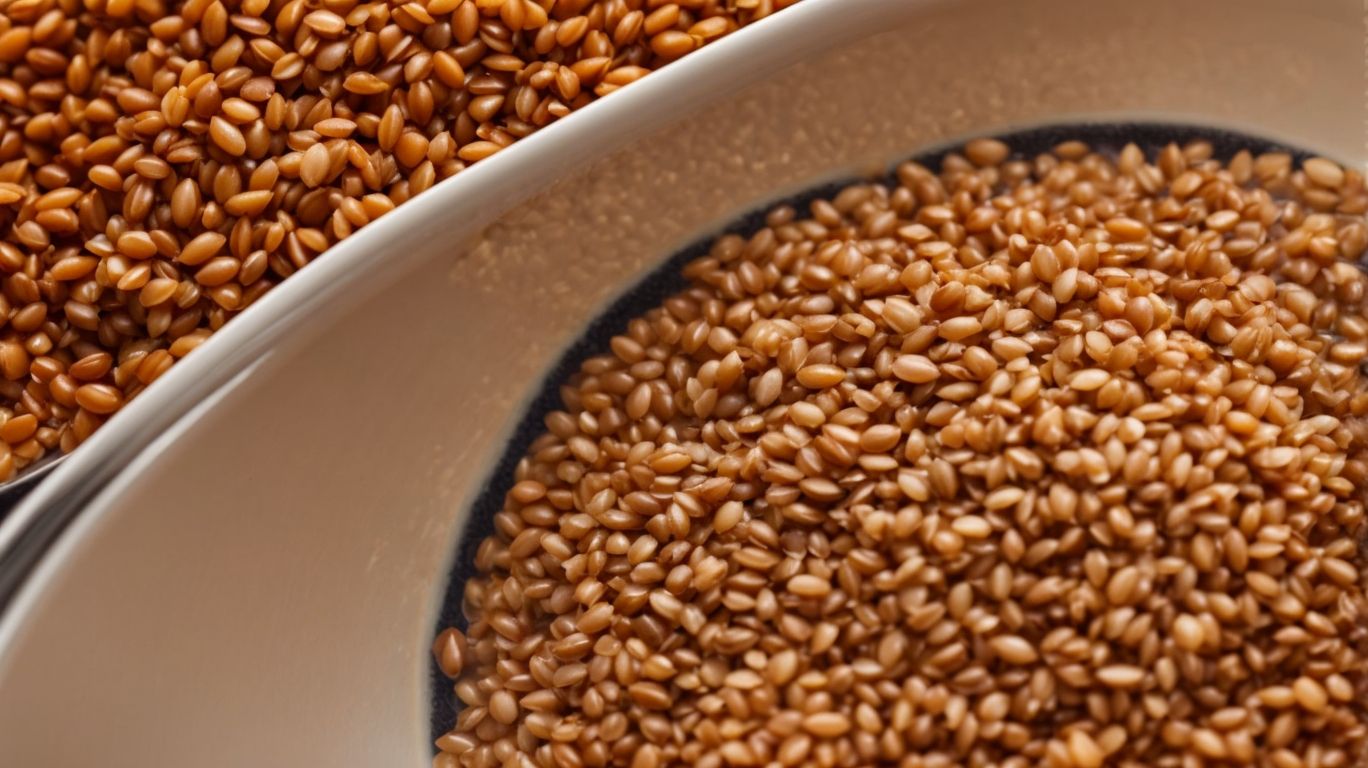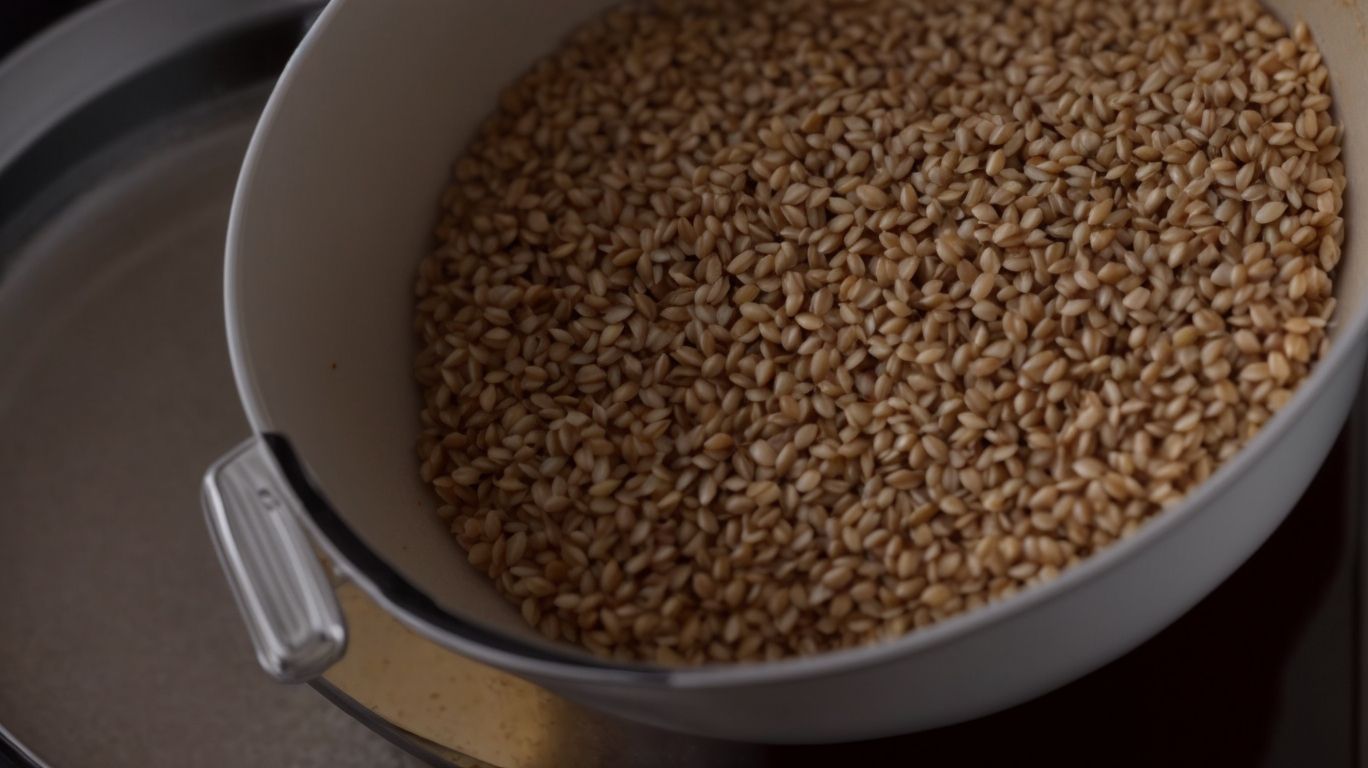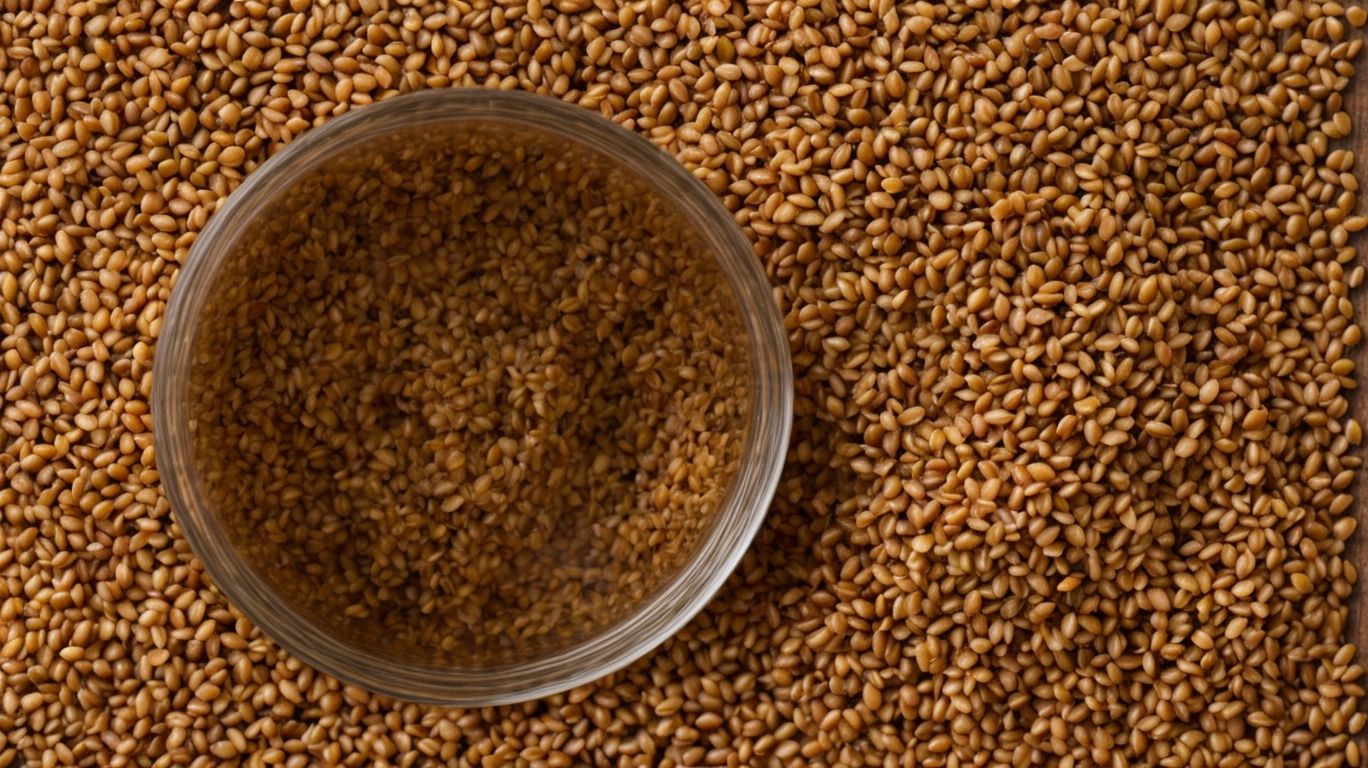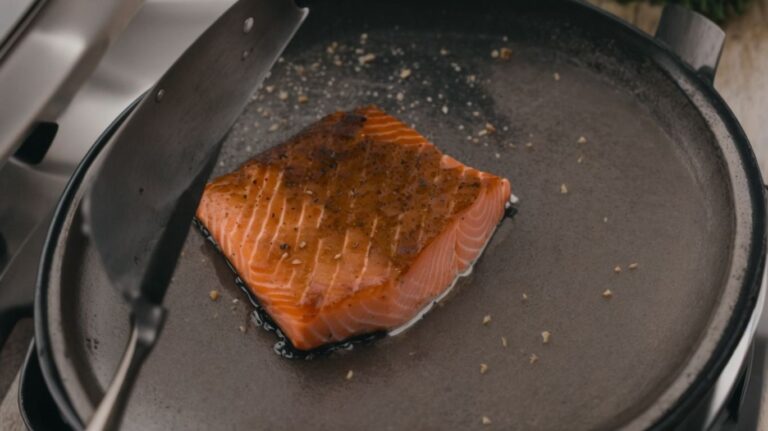How to Cook Wheat Berries After Soaking?
Have you ever wondered what wheat berries are and how to cook them?
Discover the different types of wheat berries, the benefits of soaking them before cooking, and the best way to cook soaked wheat berries.
We will guide you through each step, from soaking to cooking, and share some delicious recipes to try.
If you’re ready to elevate your culinary skills and explore the world of wheat berries, keep reading!
Key Takeaways:
What Are Wheat Berries?
Wheat berries are whole, unprocessed wheat kernels that contain all three parts of the grain – the bran, germ, and endosperm. They are versatile grains often used in cooking for their nutritional value and hearty texture.
You’ll find wheat berries commonly featured in salads, soups, and side dishes due to their nutty flavor and chewy texture. Their rich, earthy taste pairs well with herbs, vegetables, and proteins, making them a staple ingredient in various cuisines around the world. Whether simmered as a standalone dish or added to pilafs and stir-fries, wheat berries add a satisfying bite and robust flavor to any meal. Their high fiber content and complex carbohydrates make them a wholesome choice for those seeking a nutritious alternative to refined grains.
What Are the Different Types of Wheat Berries?
The different types of wheat berries include soft wheat berries, hard wheat berries, farro, and other varieties that vary in texture, flavor, and cooking time. Each type offers a distinct taste and culinary experience.
Soft wheat berries, also known as common wheat, have a tender texture and mild flavor, making them perfect for salads and side dishes. In contrast, hard wheat berries, like durum wheat, are dense and chewy, ideal for hearty dishes like soups and stews. Farro, a type of ancient wheat kernel, stands out for its nutty flavor and chewy texture, often used in traditional Mediterranean dishes.
In terms of cooking requirements, soft wheat berries cook faster than hard wheat berries, taking around 30-40 minutes compared to 50-60 minutes. Farro, on the other hand, requires longer cooking time, typically around 45-60 minutes to achieve a tender yet slightly chewy consistency.
By understanding the differences in texture, flavor, and cooking time among these various types of wheat berries, you can experiment with recipes and tailor your dishes to suit your preferences and culinary needs.
Why Should You Soak Wheat Berries Before Cooking?

Credits: Poormet.Com – George Lopez
Soaking wheat berries before cooking is essential to reduce their cooking time and soften the grains. This process allows the wheat kernels to absorb water, making them easier to cook and enhancing their texture and flavors.
When wheat berries are soaked, they plump up as they slowly take in water, which not only speeds up the cooking process but also results in a more tender and palatable end product. Water absorption is key here; it helps the grains to soften uniformly, reducing any unevenness in texture that might occur if they were cooked directly without soaking. By allowing the wheat berries to sit in water for a designated time, you’re essentially kickstarting their hydration process, setting the stage for a marvelous transformation during cooking.
What Are the Benefits of Soaking Wheat Berries?
The benefits of soaking wheat berries include enhanced flavor development, improved digestibility, and a delicious taste profile in cooked dishes. By soaking, the grains become more flavorful and enjoyable in various recipes.
When wheat berries are soaked, their natural enzymes are activated, breaking down complex sugars and reducing phytic acid, which can make the grains easier for the body to digest. This process also helps enhance the overall taste of the wheat berries, resulting in a nuttier and sweeter flavor compared to unsupped grains.
Soaking wheat berries can soften their texture, making them more tender and palatable when cooked. The soaking process allows the grains to absorb water, leading to a plumper and juicier consistency, adding depth to dishes such as salads, pilafs, or stews.
How Long Should You Soak Wheat Berries?
The ideal soaking time for wheat berries is typically around 8 hours or overnight, allowing the grains to fully absorb water and soften.
If you’re short on time, shorter soaking periods of about 30 minutes to 2 hours can still be effective for preparing wheat berries. While the longer soaking time ensures thorough softening and hydration that leads to a plumper texture, the shorter soak can expedite the process and yield satisfactory results as well. The primary goal is to give the wheat berries ample time to absorb water, which enhances their digestibility and cooking quality.
What Is the Best Way to Soak Wheat Berries?
The best way to soak wheat berries is to rinse them thoroughly, cover with ample water, and let them sit to absorb moisture. After soaking, drain the excess water to prepare the grains for cooking.
Once you have let the wheat berries soak for the recommended time, it’s crucial to proceed with the draining process. Carefully pour the contents into a fine-mesh strainer, ensuring that all excess water is removed. Draining the wheat berries effectively will prevent them from becoming mushy when cooked and will allow them to retain their texture and integrity.
Step 1: Rinse the Wheat Berries
To start the soaking process, rinse the wheat berries under cold water to remove any debris or dust. Some recipes may suggest toasting the grains in the oven before soaking for added depth of flavor.
When rinsing the wheat berries, ensure you thoroughly agitate them in a fine-mesh strainer or colander to get rid of any impurities. After rinsing, allow the berries to drain completely before proceeding with the toasting step.
To toast the grains, spread them out on a baking sheet in a preheated oven at 350°F for about 10-15 minutes, stirring occasionally for even browning. The toasting process not only enhances the nutty flavor but also adds a delightful crunch to your dishes.
Step 2: Measure and Add Water
After rinsing, measure the appropriate amount of water needed to cover the wheat berries in a pot. Bring the water to a simmer and add the toasted grains to start the soaking process.
Once the water is simmering, carefully add the toasted wheat berries into the pot. The gentle simmer will effectively soften the grains and allow them to absorb the water, aiding in the soaking process. Let the wheat berries simmer for about 30-45 minutes, ensuring they are fully plumped up and tender. Be mindful not to overcook them, as they should still have a slight firmness after simmering.
Step 3: Cover and Let Sit
Cover the pot with a lid and let the wheat berries sit for the recommended soaking time.
Once you have covered the pot and set the timer, the wheat berries begin to absorb the water and expand. This process helps to soften the berries, making them easier to cook and digest. If you are looking to speed up the soaking process, you can opt for a high-pressure method using a pressure cooker. By utilizing the high pressure technique, the soaking time is significantly reduced, offering a quick alternative for those in a hurry.
What Is the Best Way to Cook Soaked Wheat Berries?

Credits: Poormet.Com – Bryan Scott
To cook soaked wheat berries, drain the excess water and add fresh water to a pot. Boil the grains until tender, then reduce heat to simmer for a flavorful base in salads or pair with nuts for added texture.
Soaking the wheat berries overnight allows them to soften, reducing cooking time and improving their texture. Once the excess water is drained and new water added, bring the pot to a boil to cook the wheat berries quickly and efficiently. By lowering the heat to a simmer, you infuse the grains with flavors while maintaining their chewy consistency, perfect for salads.
When using cooked wheat in salads, consider combining them with various nuts like walnuts or almonds to add crunch and richness to the dish. The nutty flavors complement the hearty wheat base, creating a harmonious blend of textures and tastes that elevate any salad.
Step 1: Drain the Soaked Wheat Berries
Begin by draining the soaked wheat berries to remove any excess water. Store the drained grains in the refrigerator for later use in salads, soups, or as a nutritious side dish.
After draining, place the wheat berries in an airtight container or a sealed bag to maintain freshness and prevent them from absorbing any other odors from the refrigerator. This proper storage technique ensures that the grains remain ready for your next culinary creation. Whether you choose to incorporate them into a colorful grain salad, a hearty vegetable soup, or serve them as a wholesome accompaniment to a main course, having prepped wheat berries on hand opens up a world of delicious and healthy meal possibilities.
Step 2: Add Fresh Water and Bring to a Boil
Add fresh water to the drained wheat berries in a pot and bring it to a boil.
Cooking the grains until tender ensures a perfectly cooked base for various dishes, similar to preparing farro or other cooked grains. It’s important to keep an eye on the pot, stirring occasionally to prevent sticking.
Once the water reaches a vigorous boil, reduce the heat to a simmer and cover the pot, allowing the wheat berries to gently cook. The cooking time may vary depending on the variety of wheat berries, but typically it takes around 25-30 minutes for them to become tender.
Step 3: Reduce Heat and Simmer
Once boiled, reduce the heat and let the wheat berries simmer until they reach a tender consistency. The cooked grains are now ready to be used in a variety of dishes, adding a tasty and nutritious element to salads.
Simmering the wheat berries is a crucial step that allows them to absorb flavors while maintaining their satisfying chewy texture. This slow cooking process ensures that the grains are cooked evenly, creating a perfect base for flavorful salads.
Cooked wheat berries are incredibly versatile. You can toss them into a refreshing summer salad, combining them with fresh veggies, herbs, and a zesty dressing for a delicious meal that’s both satisfying and nutritious.
Step 4: Check for Doneness
To ensure the wheat berries are cooked to perfection, taste a sample for doneness. Adjust the cooking time if needed and consider pairing the cooked grains with oven-toasted nuts for added crunch and flavor.
After sampling the wheat berries for doneness, assess if they have reached the desired level of tenderness. If the berries are still too firm, add a bit more water and continue cooking until they are soft but still retain a slight chewiness.
For a delightful contrast in texture, you can include a mix of oven-toasted nuts, such as almonds or pecans, with the cooked wheat berries. The nuts will provide a satisfying crunch that complements the hearty grains.
What Are Some Recipes That Use Cooked Wheat Berries?
Cooked wheat berries can be used in various recipes to create delicious and nutritious dishes. Explore recipes like Wheat Berry Salad with Feta and Mint, Wheat Berry and Veggie Stir-Fry, and Wheat Berry and Bean Soup for flavorful meal options.
Wheat berries, with their chewy texture and nutty flavor, can add a wholesome twist to salads, stir-fries, and soups. When used in a Wheat Berry Salad with Feta and Mint, they provide a satisfying crunch and a hearty base for fresh ingredients to shine.
In a Wheat Berry and Veggie Stir-Fry, they soak up the savory flavors of spices and vegetables, creating a robust and filling dish.
In a Wheat Berry and Bean Soup, these berries lend a comforting thickness and richness to the broth, making it a nourishing and satisfying soup option.
Wheat Berry Salad with Feta and Mint
The Wheat Berry Salad with Feta and Mint is a refreshing dish that combines cooked wheat berries with tangy feta cheese, fresh mint, and a medley of beans for a satisfying and nutritious salad experience.
Wheat berries, known for their chewy texture and nutty flavor, are a hearty base that provides a substantial foundation for this vibrant dish. The creamy and salty notes from the feta cheese perfectly complement the earthy tones of the wheat berries, creating a harmonious balance of flavors.
The addition of fresh mint adds a burst of freshness and herbaceous aroma, elevating the salad’s overall profile. Meanwhile, the medley of beans not only increases the protein content but also contributes a variety of textures, making each bite a delightful journey of contrasts.
Wheat Berry and Veggie Stir-Fry
The Wheat Berry and Veggie Stir-Fry is a vibrant dish that pairs tender cooked wheat berries with a colorful assortment of vegetables, stir-fried to perfection with aromatic seasonings for a quick and flavorful meal option.
For this nutritious and tasty dish, you can choose a variety of vegetables such as bell peppers, broccoli, snow peas, carrots, and mushrooms to add both flavor and texture.
Stir-frying these veggies ensures they retain their crunchiness and nutritional value. The secret to a successful stir-fry lies in high heat and constant stirring to cook the ingredients quickly while preserving their vibrant colors and nutrients. To enhance the flavors, you can use ingredients like garlic, ginger, soy sauce, and a splash of sesame oil.
Wheat Berry and Bean Soup
The Wheat Berry and Bean Soup is a hearty recipe featuring cooked wheat berries and a medley of beans simmered in a flavorful broth. Consider using a pressure cooker for efficient cooking and deepening the rich flavors of the soup.
If you opt for a pressure cooker, start by selecting a mix of beans such as black beans, kidney beans, and chickpeas to add variety and texture to the dish. For the broth, you can use vegetable broth or chicken broth, depending on your preference. Simmering the soup will allow the flavors to meld together beautifully.
When using a pressure cooker, follow the manufacturer’s instructions for cooking beans to ensure they are perfectly tender. The high pressure helps to lock in the flavors and reduce cooking time significantly, making this a convenient option for busy days.
Frequently Asked Questions
1. How do I properly soak wheat berries before cooking?
To soak wheat berries, measure out the desired amount and place them in a large bowl. Cover with 2-3 inches of water and let them sit for at least 8 hours or overnight.
2. Can I use any type of wheat berries for this cooking method?
Yes, you can use any type of wheat berries for this cooking method. Common varieties include hard red wheat, soft white wheat, and durum wheat.
3. What is the ratio of water to wheat berries when cooking after soaking?
The general rule is to use 3 cups of water for every 1 cup of wheat berries. However, you may need to adjust the ratio depending on the type of wheat berries and your desired consistency.
4. How long does it take to cook wheat berries after soaking?
After soaking, wheat berries typically take about 45 minutes to 1 hour to cook. However, some varieties may take longer, so it’s best to check the package instructions for specific cooking times.
5. Can I freeze cooked wheat berries for later use?
Yes, you can freeze cooked wheat berries for up to 3 months. Simply let them cool completely, then store in an airtight container or freezer bag. When ready to use, thaw in the refrigerator and reheat on the stovetop or in the microwave.
6. What are some ways to use cooked wheat berries?
Cooked wheat berries can be used in a variety of dishes, such as salads, soups, casseroles, and even as a substitute for rice or quinoa. They also make a nutritious breakfast option when topped with fruit and nuts. The possibilities are endless!



